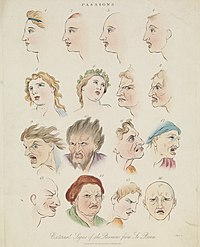
Photo from wikipedia
Recent developments in the field of AI have fostered multidisciplinary research in various disciplines, including computer science, linguistics, and psychology. Intelligence, in fact, is much more than just IQ: it… Click to show full abstract
Recent developments in the field of AI have fostered multidisciplinary research in various disciplines, including computer science, linguistics, and psychology. Intelligence, in fact, is much more than just IQ: it comprises many other kinds of intelligence, including physical intelligence, cultural intelligence, linguistic intelligence, and emotional intelligence (EQ). While traditional classification tasks and standard phenomena in computer science are easy to define, however, emotions are still a rather mysterious subject of study. That is why so many different emotion classifications have been proposed in the literature and there is still no common agreement on a universal emotion categorization model. In this article, we revisit the Hourglass of Emotions, an emotion categorization model optimized for polarity detection, based on some recent empirical evidence in the context of sentiment analysis. This new model does not claim to offer the ultimate emotion categorization but it proves the most effective for the task of sentiment analysis.
Journal Title: IEEE Intelligent Systems
Year Published: 2020
Link to full text (if available)
Share on Social Media: Sign Up to like & get
recommendations!